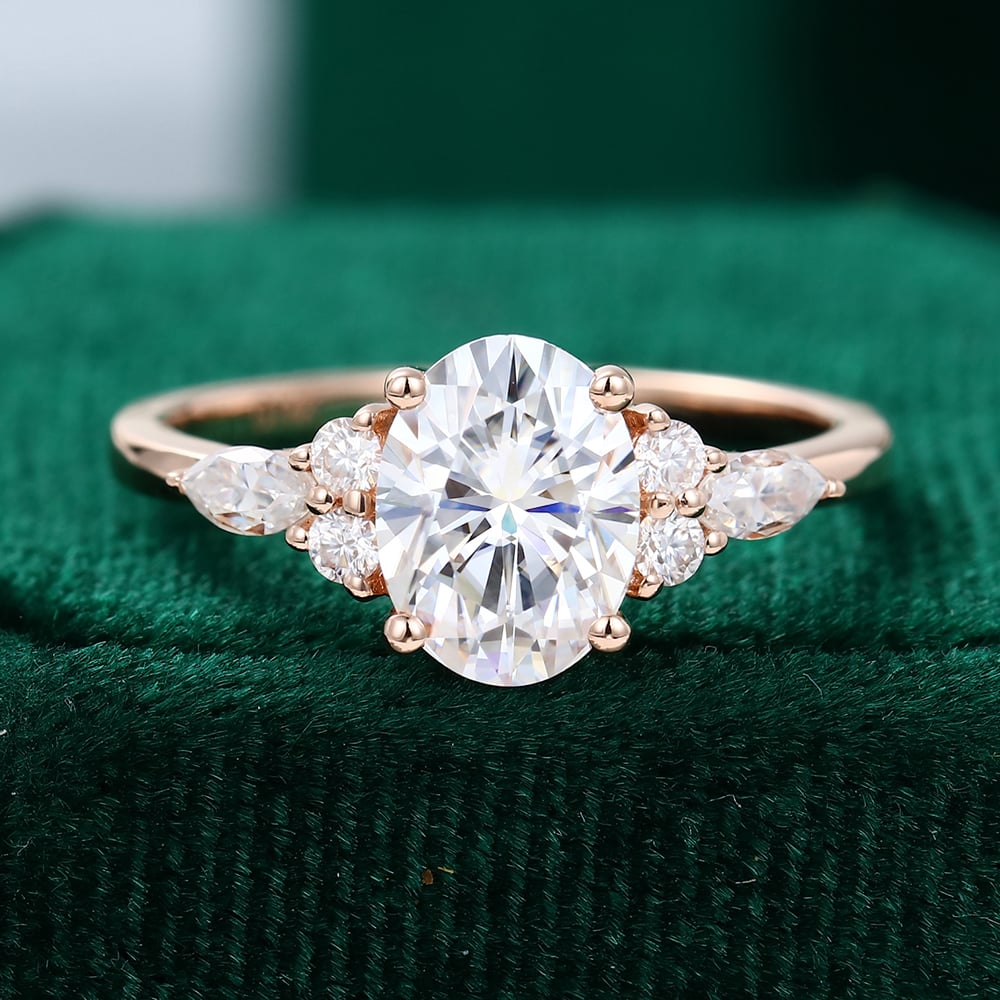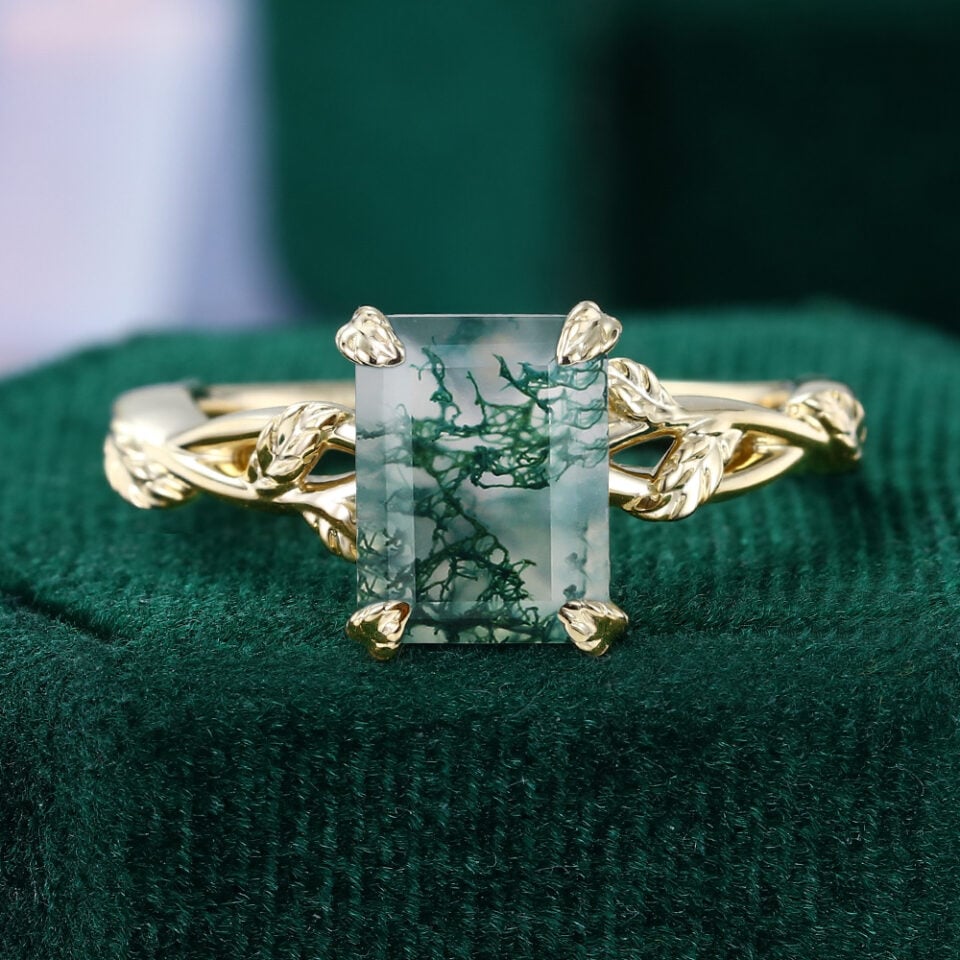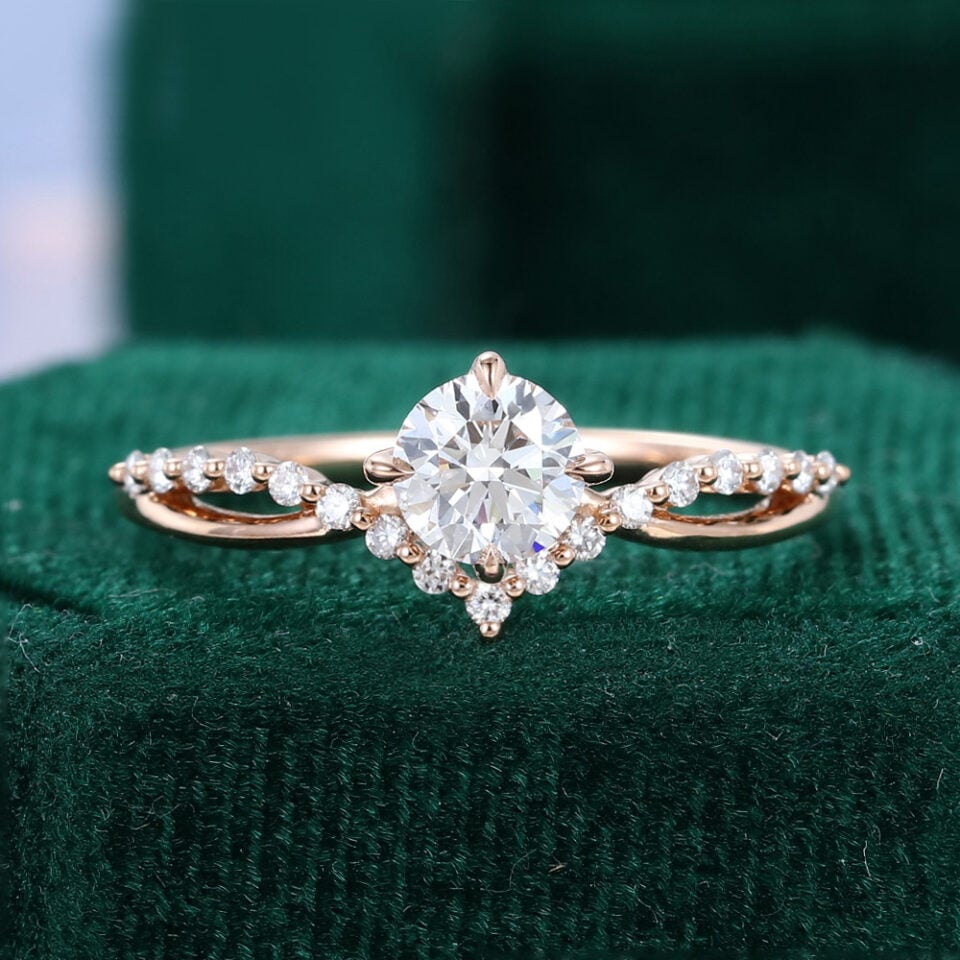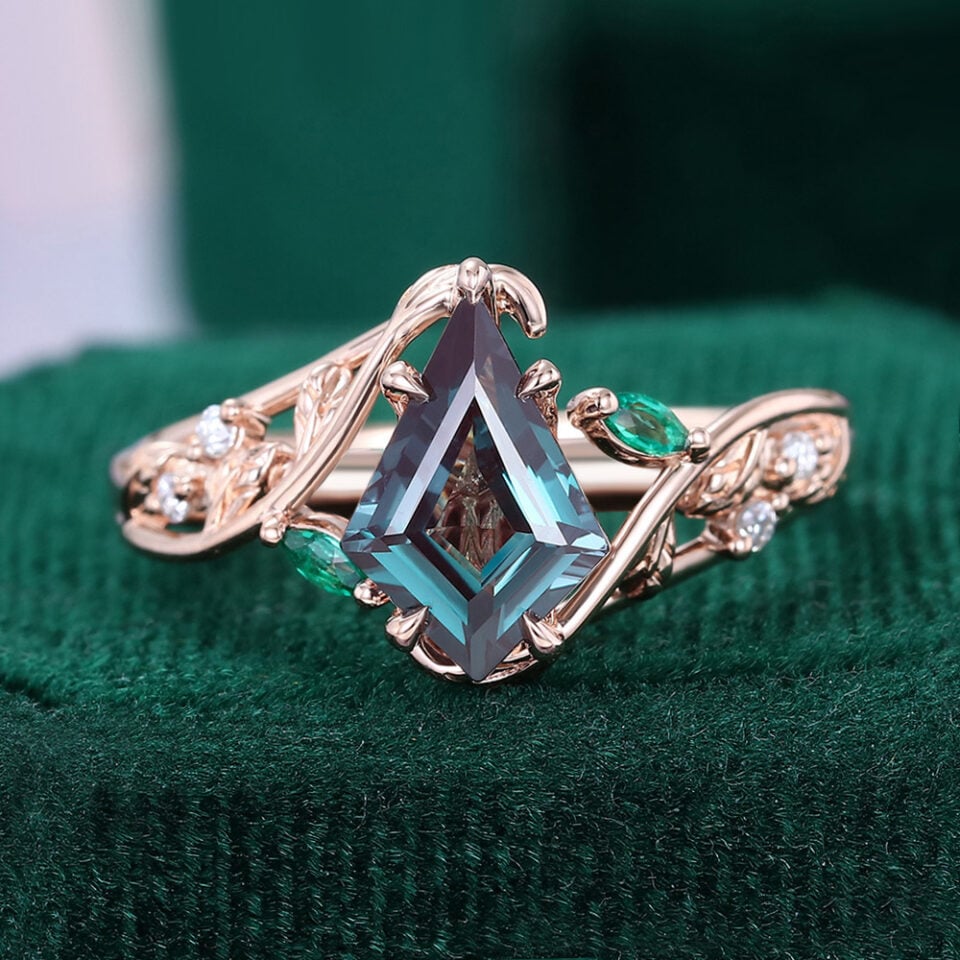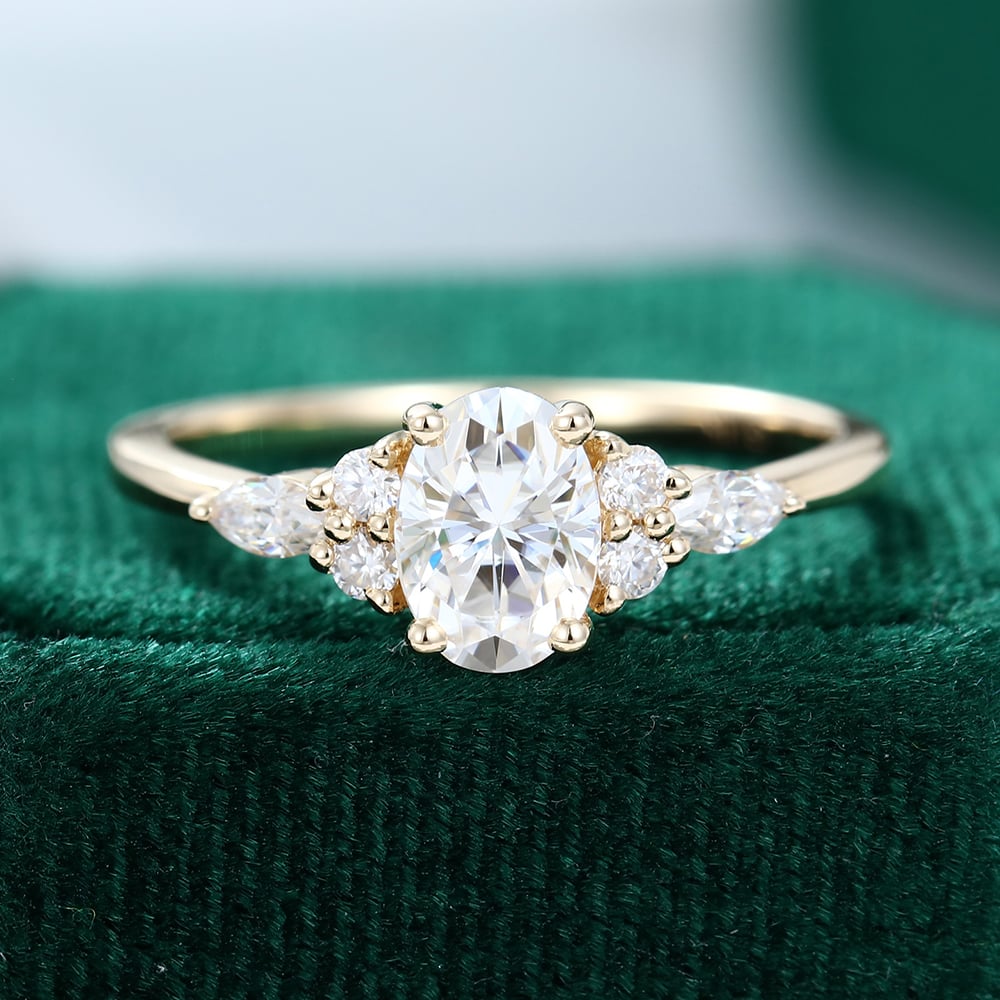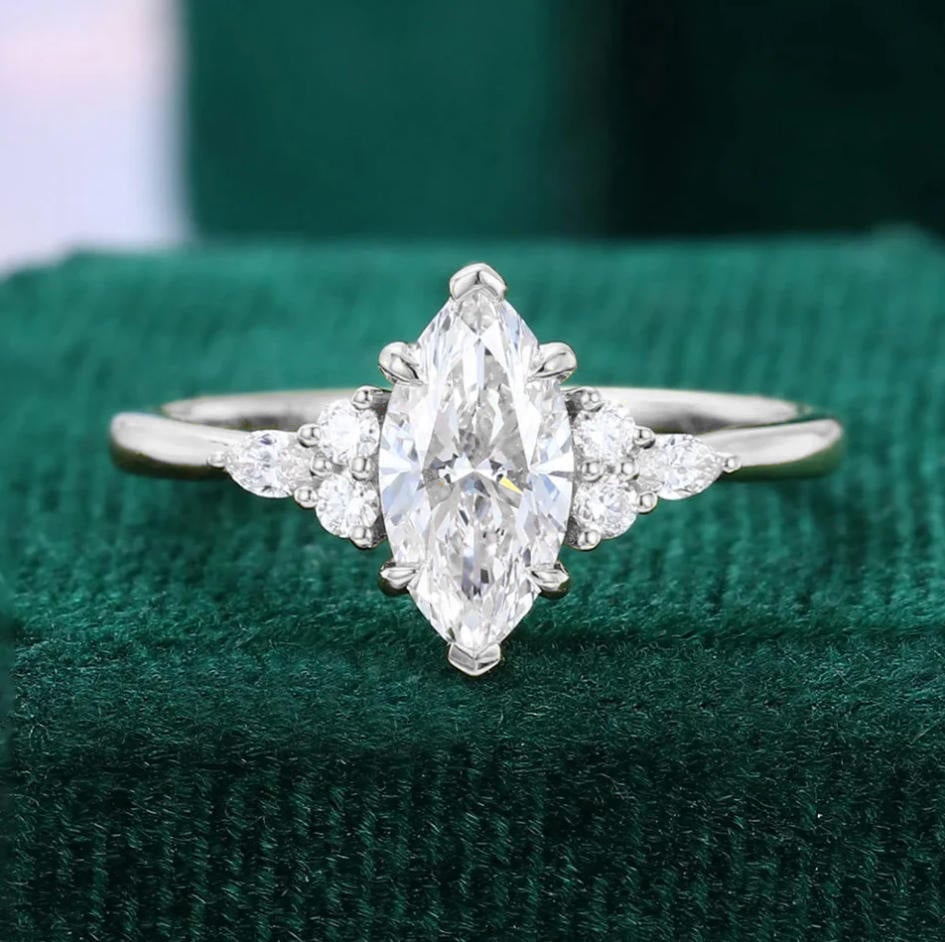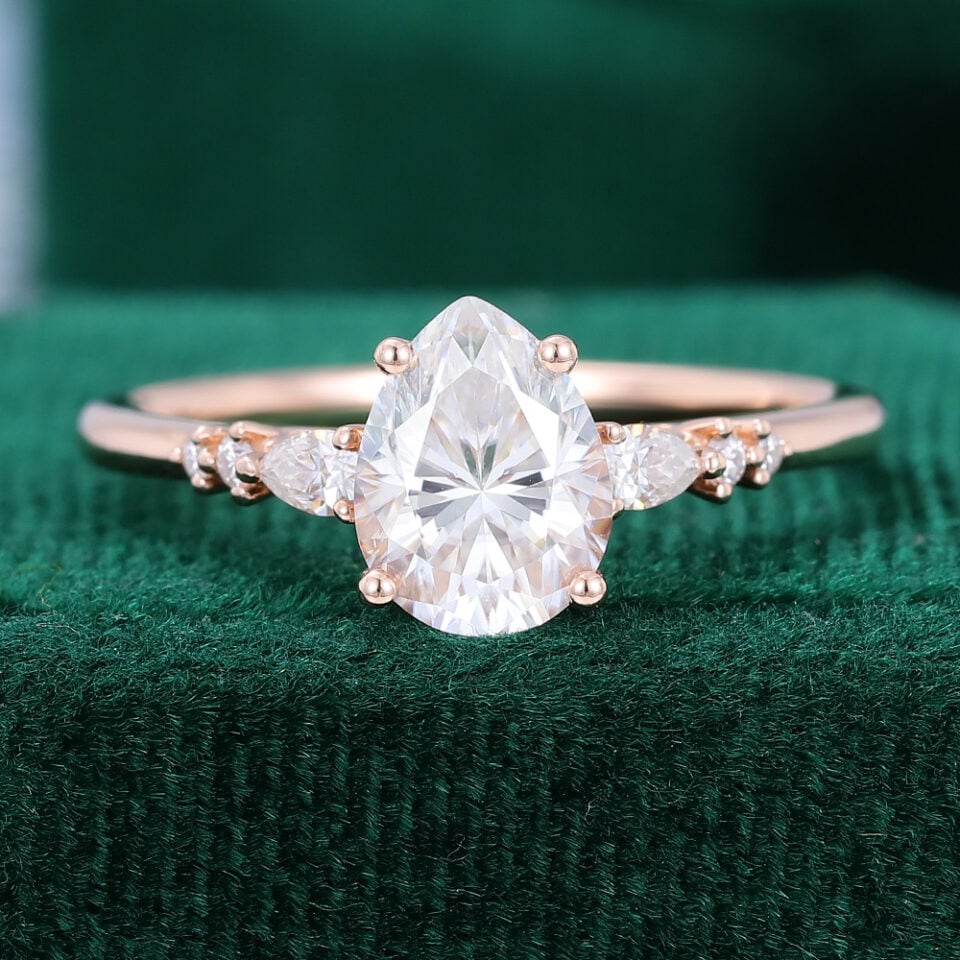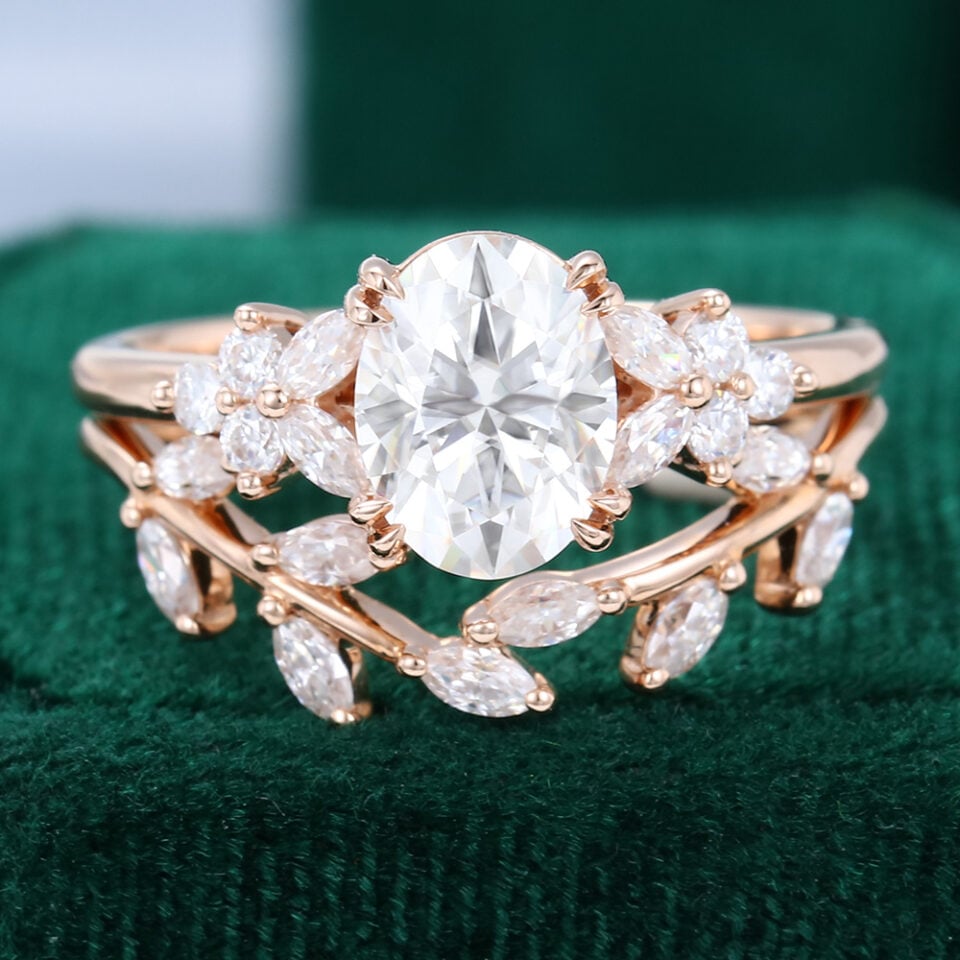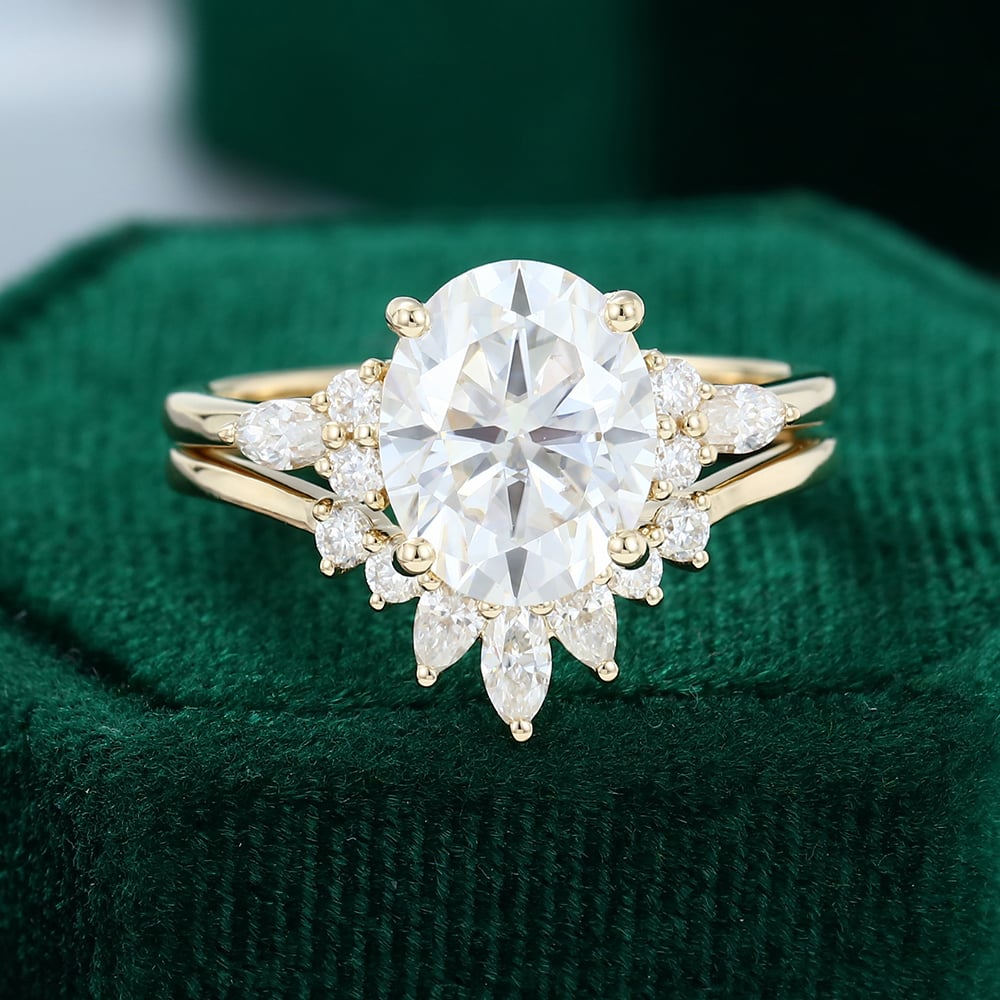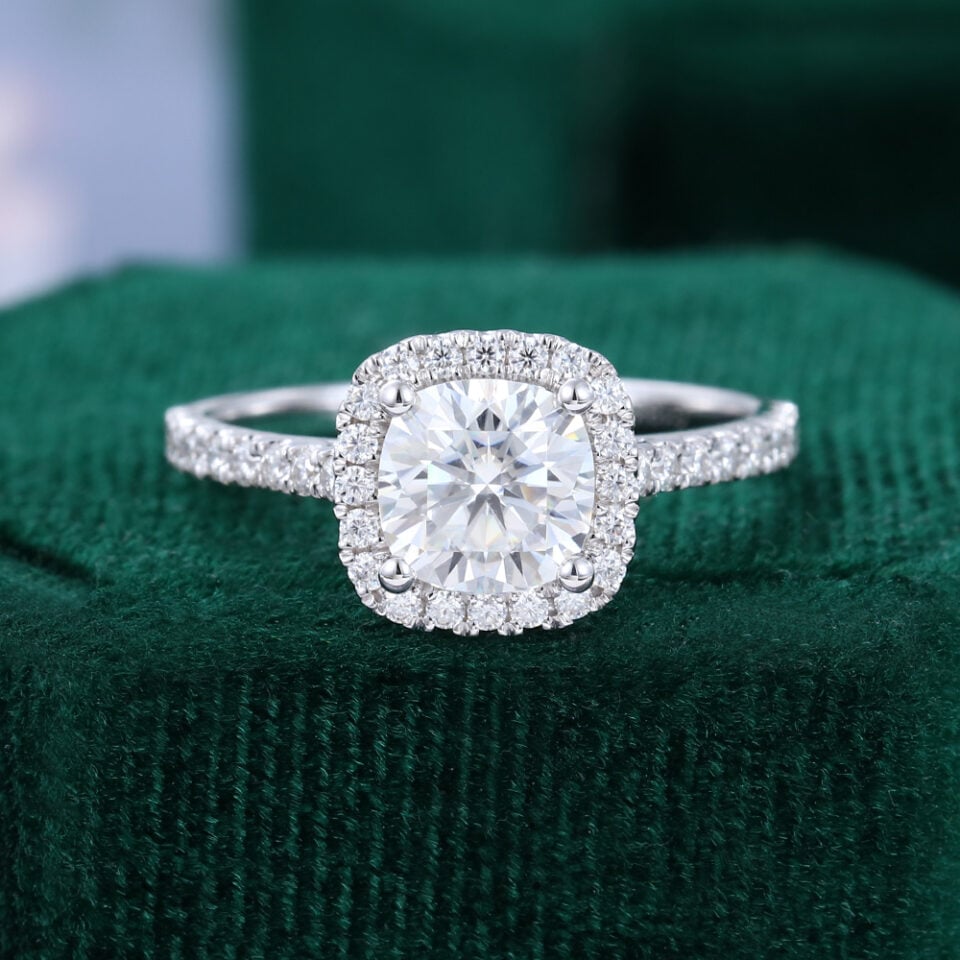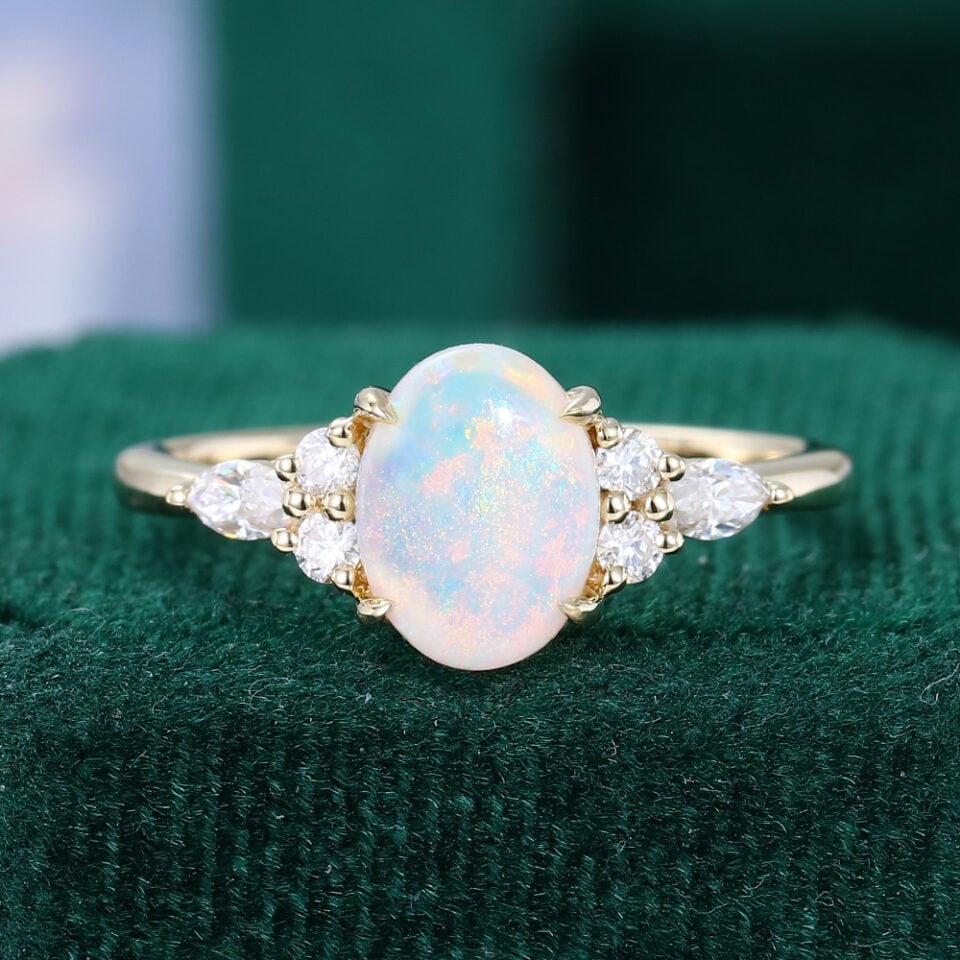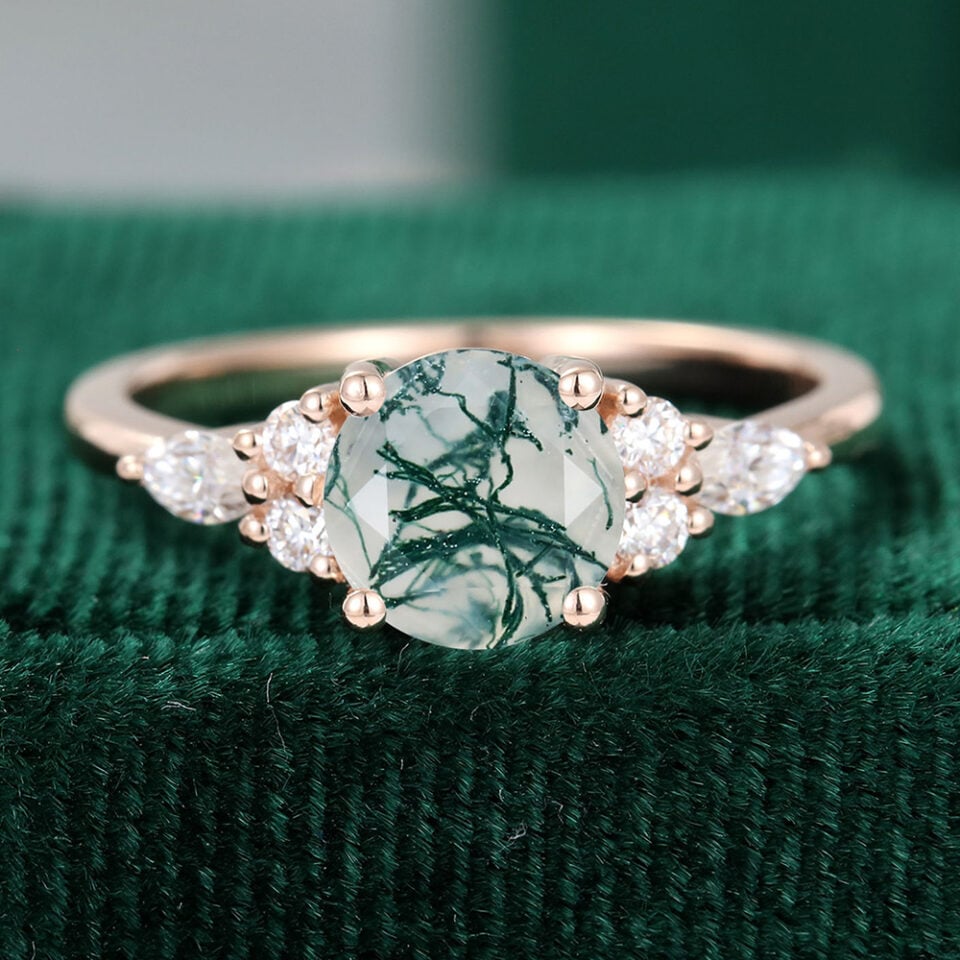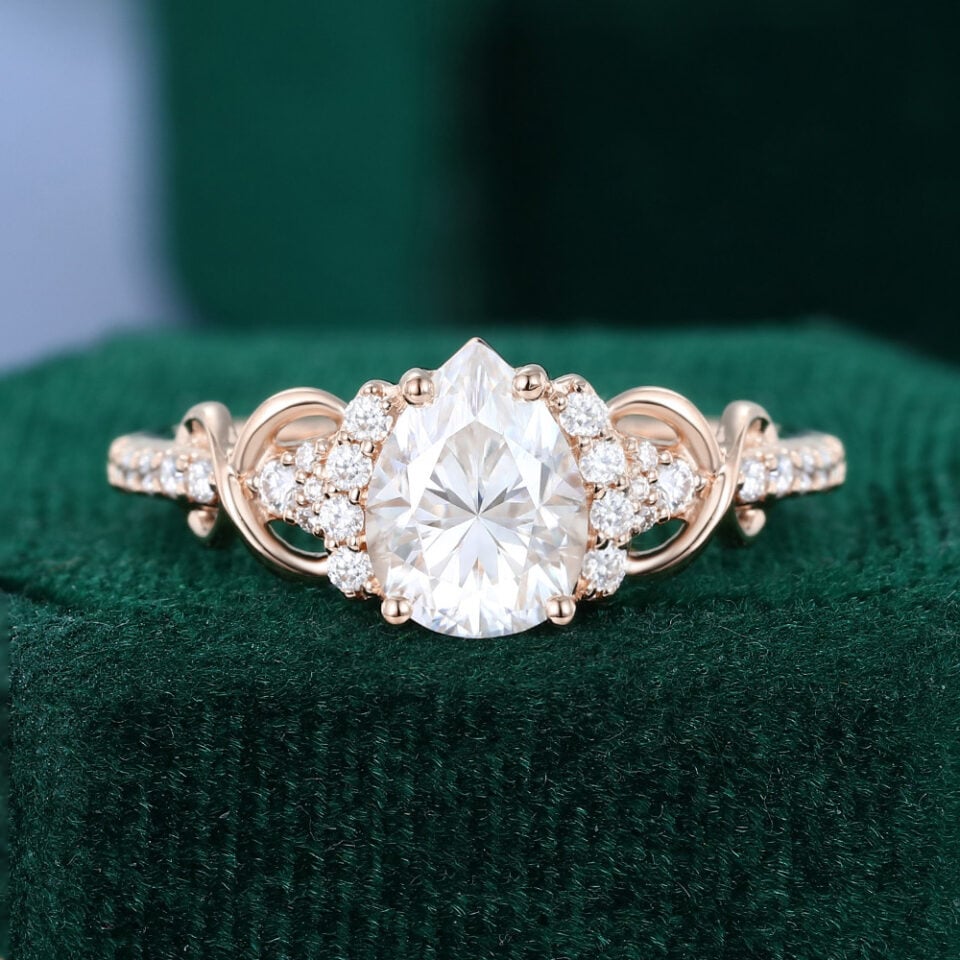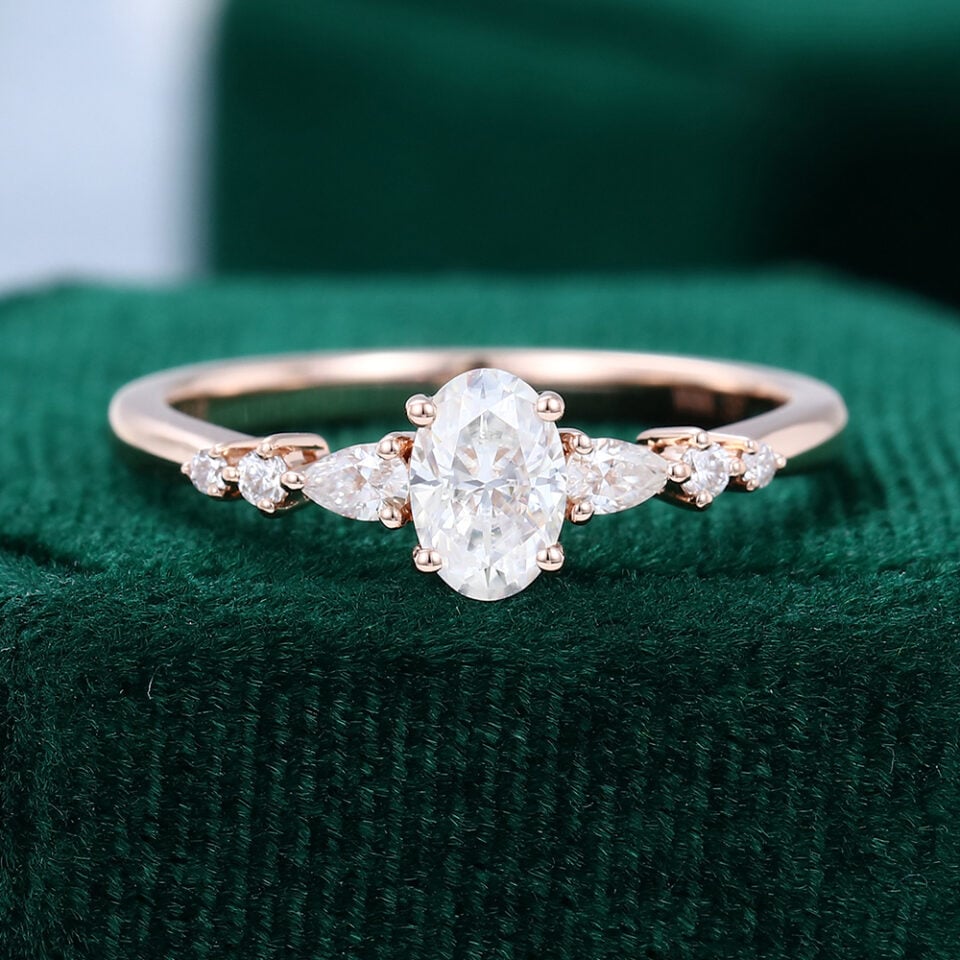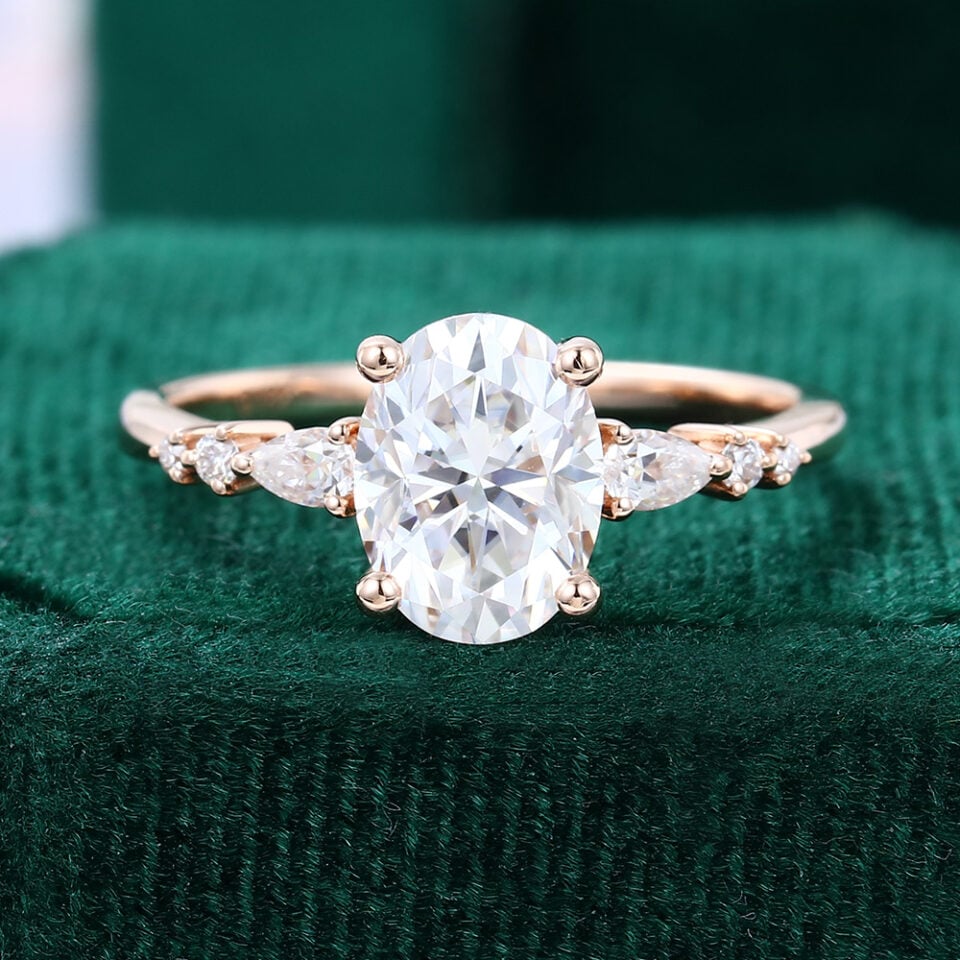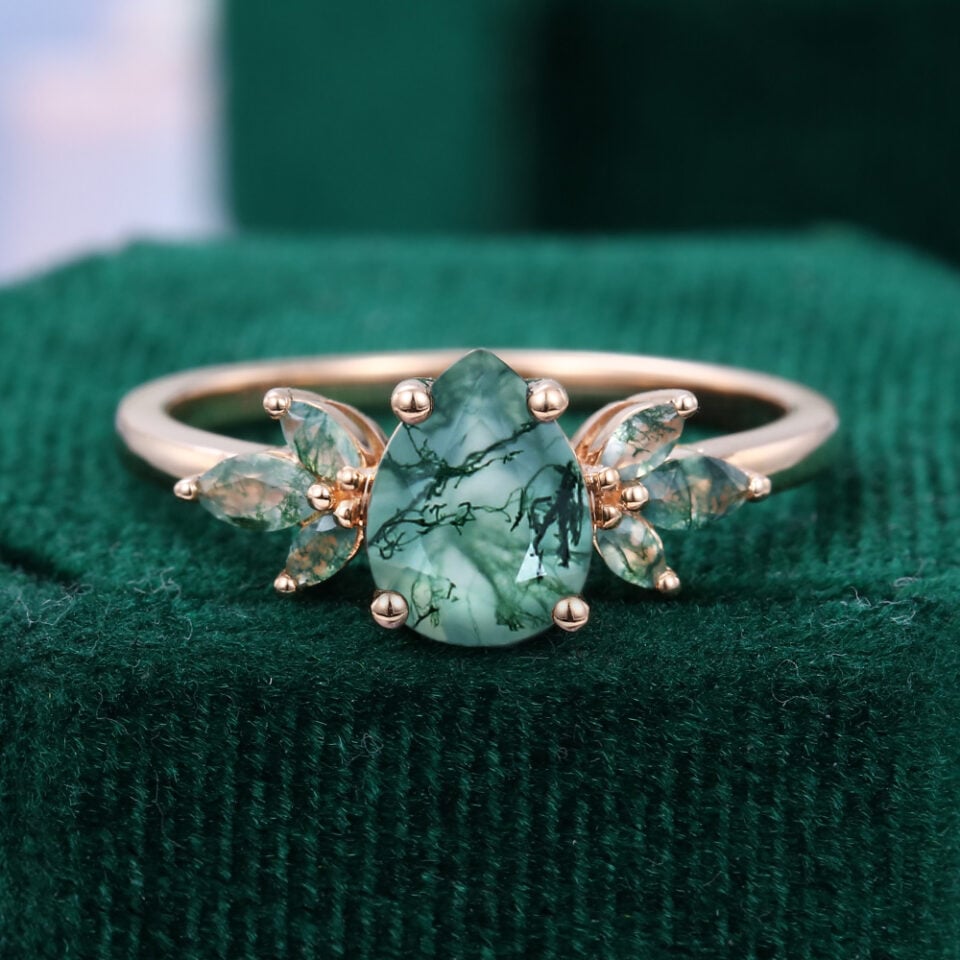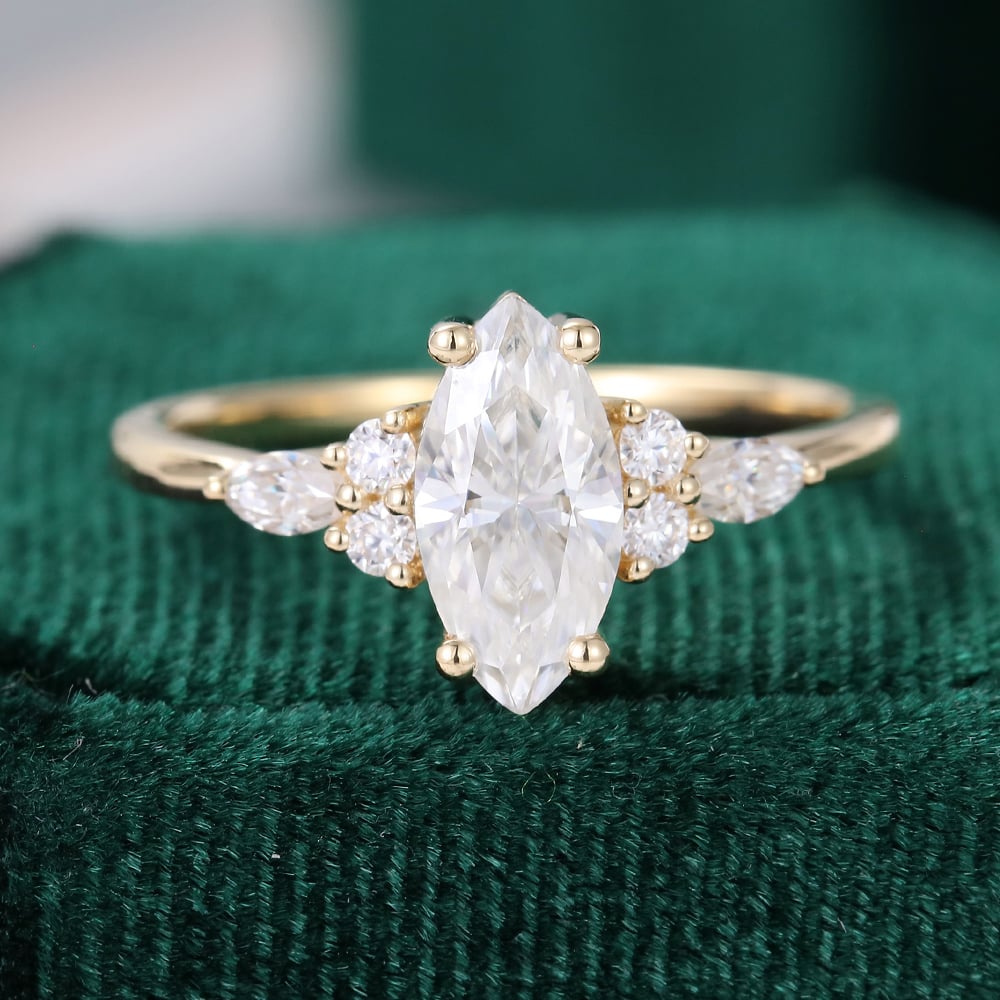- by MollyJewelryUS
- November 19, 2025
- Ring Journey
Finding the best value engagement rings in 2025 isn’t simply about choosing the lowest price—it’s about understanding which combinations of stone type, cut, and setting provide the strongest performance for the budget you have. With more choices available than ever, from lab diamonds to colored gemstones, buyers are comparing durability, design impact, and long-term practicality to determine what delivers the highest value..
This guide breaks down the factors that define “best value,” compares the most common stone categories, and outlines how to make cost-efficient choices based on real product trends available at MollyJewelryUS.
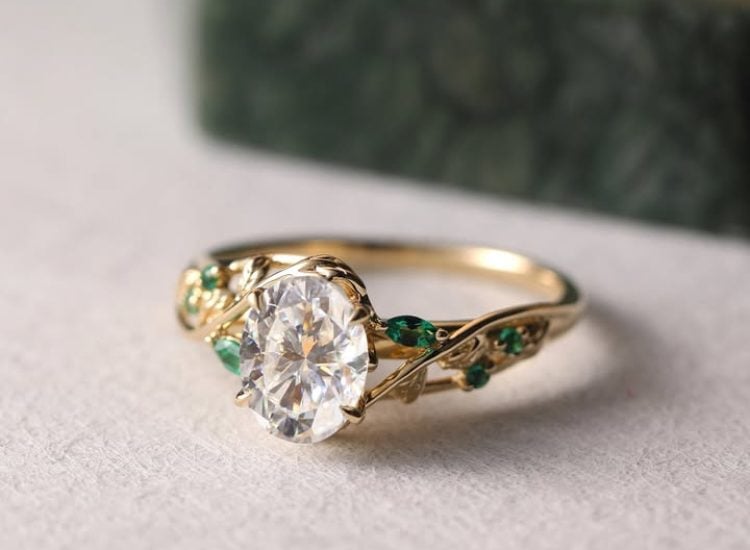
Table Of Contents:
What Does “Best Value” Really Mean for Engagement Rings?
From a practical perspective, “value” is determined by how effectively a ring balances appearance, durability, and cost. The following components affect overall value most significantly:
1. Material Durability
Daily-wear stones differ in hardness and structural toughness:
Lab Diamond / Natural Diamond — Mohs 10
Moissanite — 9.25
A ring’s real-world value increases when the material can withstand long-term wear with minimal upkeep.
2. Optical Performance (Brightness, Fire, Clarity)
Cut quality influences how large and lively a stone appears—often more than carat weight.
Shapes like oval, marquise, and pear typically offer more visible size per dollar.
3. Design Efficiency
Certain settings enhance the center stone visually without raising the cost.
Examples common in our store include:
Thin bands that emphasize the center stone
Halo or cluster settings that increase visual size
Nature-inspired or Art Deco metalwork where details come from craftsmanship rather than large stones
4. Price Transparency
Pricing varies significantly across stone types—lab diamonds, natural diamonds, moissanite, and gemstones all follow different cost structures. Clear categorization helps buyers understand these differences and compare options that fall within their target budget range.
On our website, ring styles are organized into product categories such as:
These groupings make it easier for shoppers to evaluate materials, designs, and price tiers side-by-side and identify the best value path for their needs.
Best Cuts & Carat Ranges for Sparkle Per Dollar
Some shapes give noticeably more visual impact for the same or lower price.
Best-Value Shapes
Oval — looks 15–20% larger than round for the same carat
Marquise — maximum finger coverage
Pear — elongating and elegant
Emerald — sophisticated, often lower price per carat
Round — premium price, but consistent top-tier brilliance
- Kite — increasingly popular for its geometric, modern look, offering a standout appearance without requiring high carat sizes
Best-Value Carat Ranges
Based on real purchase behavior and available inventory across our store:
0.5–1.0 CT — ideal entry point with the best price-to-sparkle ratio
1.0–1.5 CT — “premium look” without luxury pricing
2.0 CT+ — choose moissanite or gemstone for maximum value
3.0 CT+ — for bold sparkle at controlled cost (moissanite & gemstones shine here)
Settings That Increase Visual Impact Without Increasing Cost
Some designs naturally boost the look and presence of the ring—without increasing the stone cost.
A small halo can make a 1 CT stone look like 1.5 CT. Excellent for lab diamonds, gemstones & moissanite.
Multiple small stones create a high-impact, floral or vintage look at a fraction of a single-stone price.
A slim band makes the center stone appear noticeably larger—especially ovals, pears, and marquise.
Two side stones add brilliance and symbolic meaning, increasing presence without huge cost increases.
These rely on metalwork rather than stone size → stunning, detailed, and budget-friendly.
Best Value Engagement Ring Options by Budget
Below is a framework, not product-specific recommendations, helping buyers understand which categories typically offer the best value at each price level—based on what is available on our site.
This range is well-suited for:
Moissanite rings (largest sparkle-to-cost ratio)
Smaller lab diamond designs (around 0.5 CT)
Gemstone rings such as sapphire, morganite, and ruby
These choices deliver strong visual presence without significant budget pressure.
Buyers can typically access:
1 CT lab diamond solitaires
Vintage-inspired or nature-themed rings
Gemstones with diamond accents
This is the stage where design and durability meet in a balanced, long-lasting choice.
In this tier, shoppers often look for:
1–2 CT lab diamonds
Elaborate settings
Gemstone designs paired with diamond side stones
These rings deliver premium aesthetics without entering the traditional fine-jewelry price bracket.
Stone: Invest in best cut-grade natural diamonds or larger lab-grown stones with GIA/IGI certification.
Setting: Custom or designer settings with high finish quality.
Why: This is the range for buyers prioritizing investment, heritage, or maximum size with excellent craftsmanship.
For more help framing your budget, read our engagement ring budget guide.
How to Build a High-Value Ring on Any Budget
A structured approach helps buyers maximize value regardless of spending range.
Step 1: Select the Stone Type
Lab Diamond → strong durability + ethical sourcing + controlled pricing
Moissanite → bright fire and largest appearance per dollar
Gemstones → ideal for color-driven designs (sapphire, ruby, morganite)
Step 2: Choose a Size-Efficient Shape
Oval, pear, and marquise shapes consistently provide larger perceived size.
Step 3: Use Design to Enhance Value
Halo, cluster, and slim bands provide high visual impact with minimal cost increases.
Step 4: Pick a Metal That Matches Your Needs
925 sterling silver → budget-friendly
10K/14K gold → best long-term durability
Rose gold → complementary for warm-toned gemstones
Step 5: Compare Categories by Budget
The value of each stone type shifts depending on your budget ceiling.
For example:
Under $1,000 → moissanite & gemstones
Around $1,200 → 1 CT lab diamond solitaire becomes achievable
Above $1,500 → high-end lab diamonds or gemstone-diamond combinations
Conclusion
The best value engagement ring in 2025 is defined not by the lowest price but by efficient design, durable material choices, and smart selection of cut and setting. Whether choosing a lab diamond for its balanced performance, moissanite for its brilliance efficiency, or a gemstone ring for color and uniqueness, buyers today have more well-priced options than ever.
By focusing on appearance-enhancing shapes, detail-driven settings, and clear budget allocation, it’s possible to build a ring that looks refined, wears well over time, and aligns with practical spending.
Related FAQs :
What is the single most important factor for sparkle-per-dollar?
Cut. A high-quality cut optimizes light return and makes the stone appear brighter and larger.
Should I choose halo or solitaire to maximize value?
Halo for visual size and sparkle; solitaire for timeless simplicity. Halo often gives better spark-per-dollar.
Are lab-grown diamonds a good value?
Yes — they are typically the best way to own a real diamond that gives more size and quality for your budget.
What carat range looks largest for the least money?
Around 0.7–0.95 ct, or choose oval/radiant shapes where the face-up looks larger than the actual carat weight.
Where can I see curated, high-value rings?
Browse our best value engagement rings for handpicked options that follow the strategies above.
